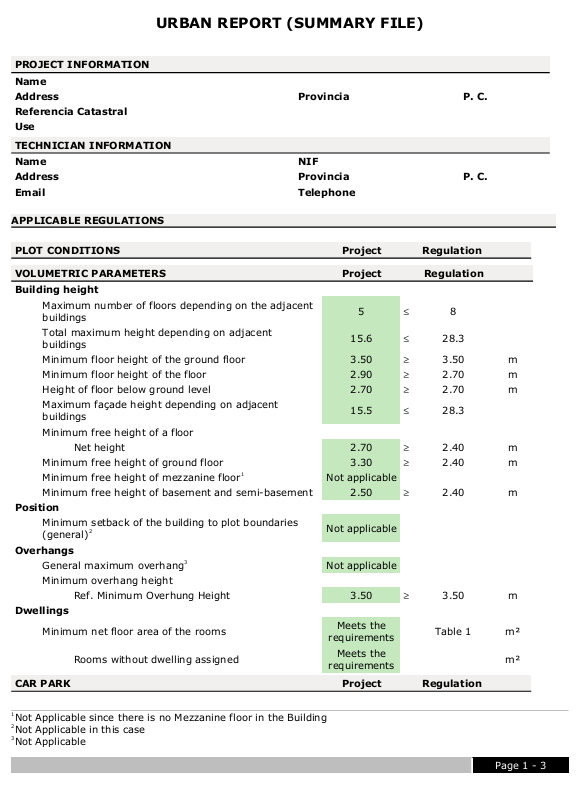Demonstration Methodology
Summary
The CHEK demonstration methodology was centered on executing an end-to-end digital workflow for building permit applications, proving that a data-driven, model-based approach can successfully support the transition to Digital Building Permits (DBP).
The overall demonstration was carried out in four pilot sites across Europe—Vila Nova de Gaia, Lisbon, Prague, and Ascoli Piceno—and across two primary building permit scenarios: New Building Construction (Scenario 1) and Building Renovation (Scenario 2).
Organisation & Governance
Pilots were executed with a clear division of roles:
- Municipal participants (city/urban planning department leads) provided rules, process knowledge, and pilot stewardship.
- Applicants/Designers prepared IFC models, performed pre-checks, and submitted through the CDE.
- Software vendors and Research institutions supported validation methodology and tool operation.
Sites & schedule. Demonstrations ran in Vila Nova de Gaia, Lisbon, Prague, and Ascoli Piceno in May–June 2025. Design partners SIA and ZWEI led city pilots according to a published calendar


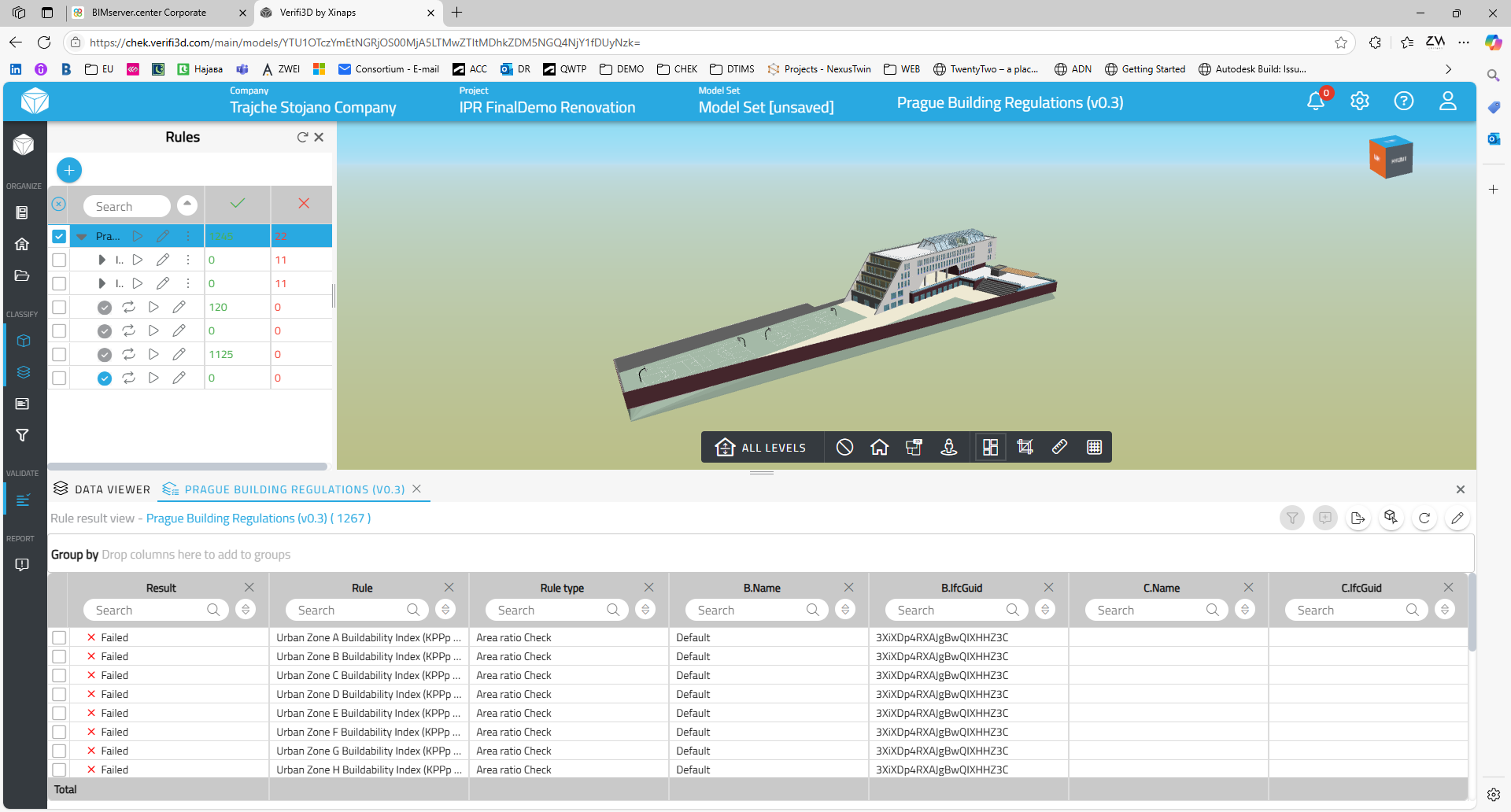
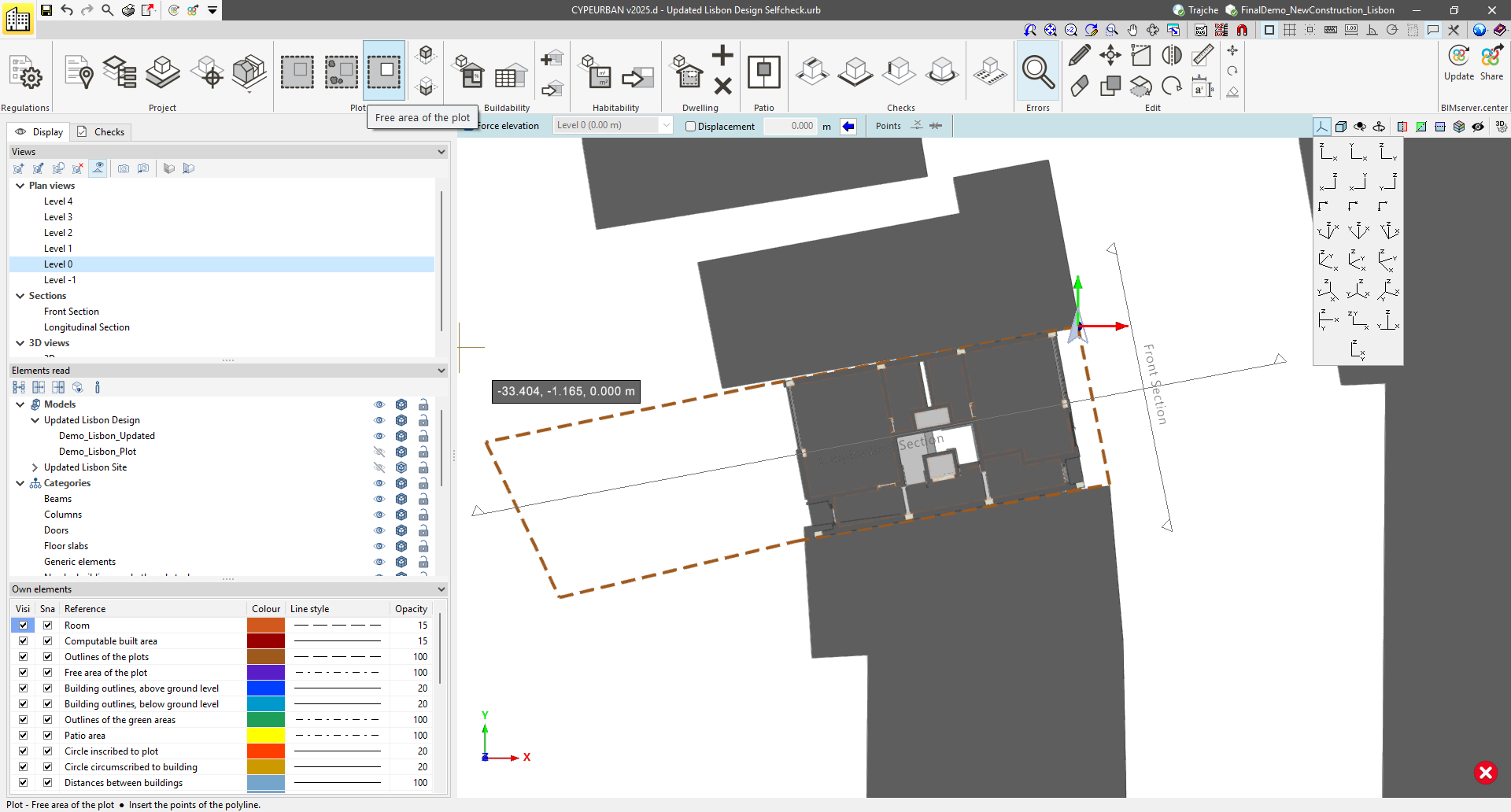
CHEK DBP Toolchain & Workflow
The pilots followed a common CHEK DBP Workflow sequence:
- Context data acquisition from VCMap (terrain, surroundings) and municipal sources; parcel limits supplemented when needed.
- BIM authoring in Autodesk Revit with export using DiRoots IFC Exporter (or native IFC where required).
- EXPRESS schema validation and IDS check using RDF IFC Viewer (IFC Engine).
- CDE publishing to CYPE’s BIMserver.center for versioned storage and exchange.
- Georeferencing verification with IfcGref/VCMap to ensure spatial integrity.
- Backend BIMtoGIS automation (e.g., Envelope Extractor, CityGML2IFC) to enable spatial validation at urban scale.
- Automated rule-checking using one or more of VCMap (GIS-based checks), Verifi3D (BIM model checks), and CYPEURBAN (graphical regulations & reporting).
- Digital signature of assessed IFC via DiRoots DiStellar.
- Reporting & review (HTML/JSON, CSV/XLS, PDF/IFC/GLTF outputs) and feedback loops through the CDE.
The CHEK DBP Platform, based on BIMserver.center, acted as a CDE, was the central hub for reading/writing project data; models validated by designers were consumed by the checking tools which returned structured reports.
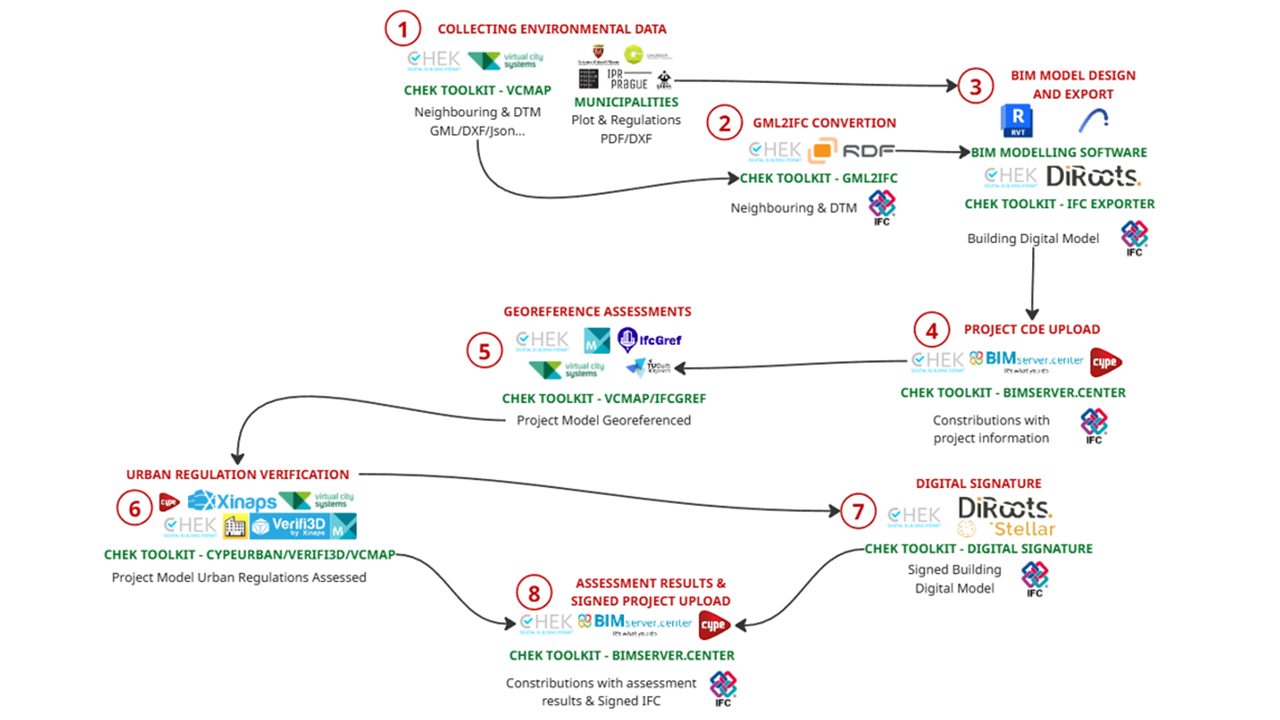
Results and Reflections


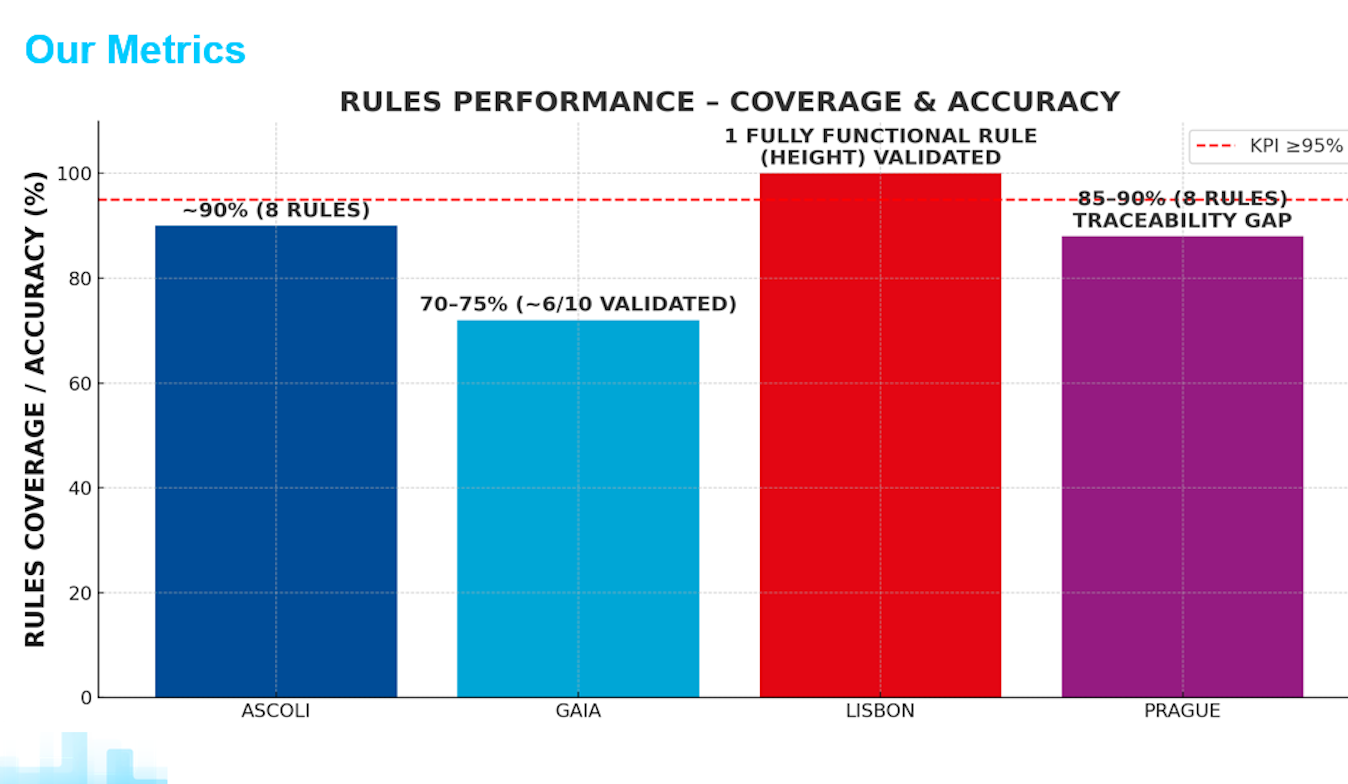
Overall, the pilots validated the end-to-end feasibility of model-based permitting while exposing gaps that must be addressed for scale: limited encoded rule coverage, legal traceability of checks, fragile cross-tool integration, and collaboration features that need strengthening. Designers and municipalities confirmed tangible benefits and a realistic pathway to adoption with further development. The demonstration process proved the following key achievements:
- We validated the CHEK DBP workflow in four EU municipalities, running two scenarios per city on 4 different building types and with real municipal officers performing the reviews
- We exercised the complete, federated DBP toolchain end-to-end with digital tools that enabled the CHEK DBP workflow.
- Rather than a lab demo, we executed a realistic workflow that mirrored a real permitting steps including real designers and municipal officers.
- Demonstration participants confirmed the conceptual value of CHEK DBP workflow. They see model-centric, standards-based validation as the right direction, with clear potential for time savings, error reduction, and clearer requirements.
- As a standout, one of the CHEK DBPs strengths was the visual feedback for compliance. The 3D overlays and geospatial context helped the designers and reviewers immediately to understand where and why a rule failed, improving clarity, communication, and decision support.
Feedback from Municipalities:
After the demonstration, the largest demonstration group with more than 20 participants, the Municipal officers, gave the following feedback:
- What worked well is the 3D/GIS visualization that made the compliance check far easier to grasp,
- Tutorials and live support were important during the pilots, it boosted the confidence and
- Usability of the CHEK toolchain was acceptable for core tasks after onboarding, particularly for visual review, identification and interpretation of detected issues.
For improvement:
- More local rules encoded with transparent rule logic and links to the relevant legal articles
- Technical integration and stability of the CHEK DBP tools must be strengthened for smoother hand-offs between tools and reliable model checking
- Immediate efficiency gains were limited, as CHEK DBP needs more maturity in order to be used in production environment.
In short, the concept, spatial context and 3D visuals resonated strongly; the path to adoption is to deepen rule automation, harden the platform, and maintain practical, hands-on onboarding.
Feedback from Designers
The designers reported similar feedback highlights. First, what worked well:
- Clarified IFC requirements that raised the models quality.
- Pre-checkings were very valuable. Designers could run early validations on their side, catch omissions before delivery, and avoid costly rework iterations.
- Simple, visual workflows helped efficiency of the process. The clean 3D views in GEOBIM environment enabled the designers to identify the issues fast, to understand their nature and to figure it out how to fix it.
Now, what needs to improve? The feedback is identical with the one reported by the municipal officers.
In short, designers saw clear value in the clarity, the pre-check workflow, and the visuals. For better results, DBPs need to adopt large number of checks, to have strong technological pipeline and to make the end-to-end experience smoother.



